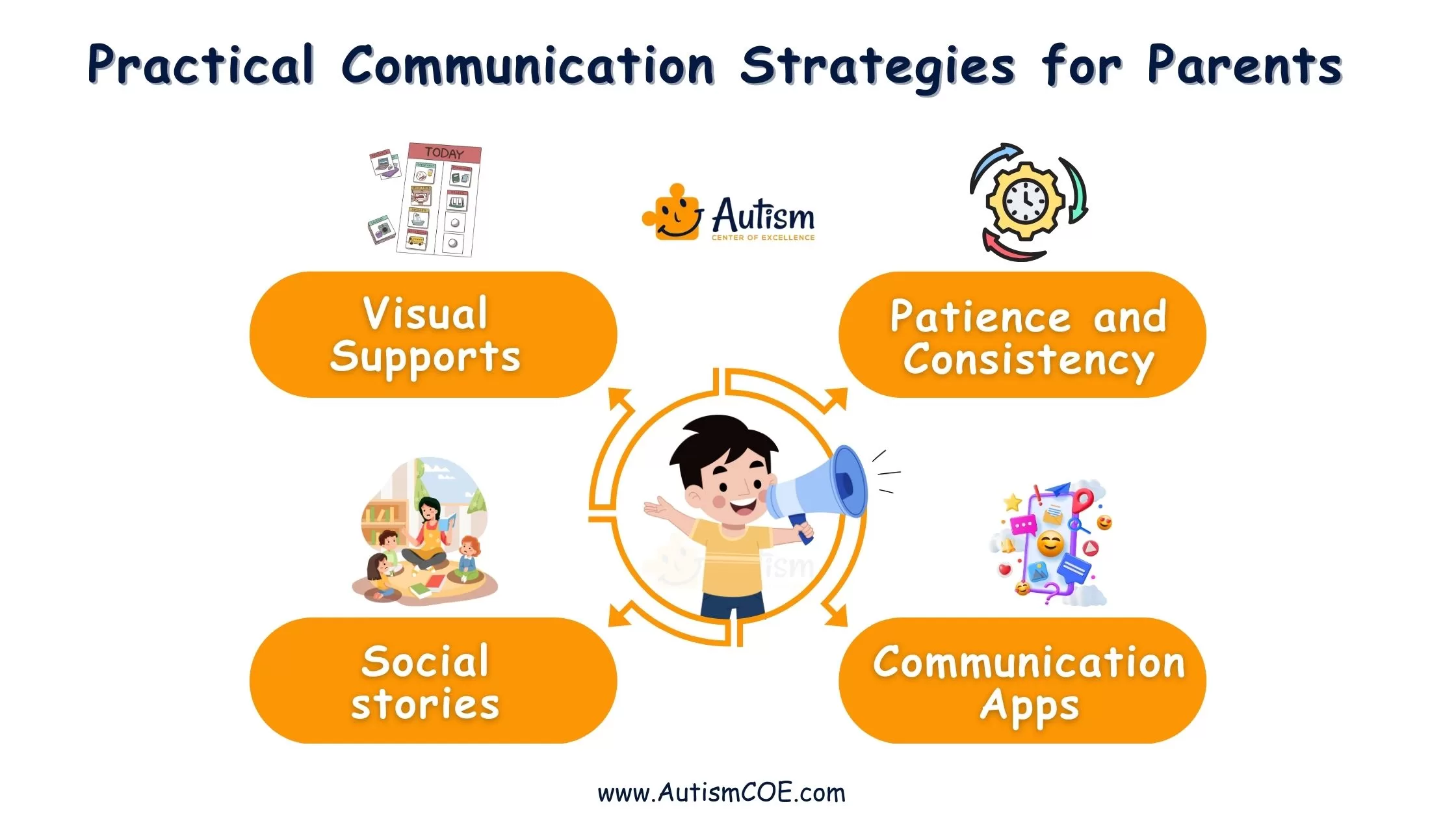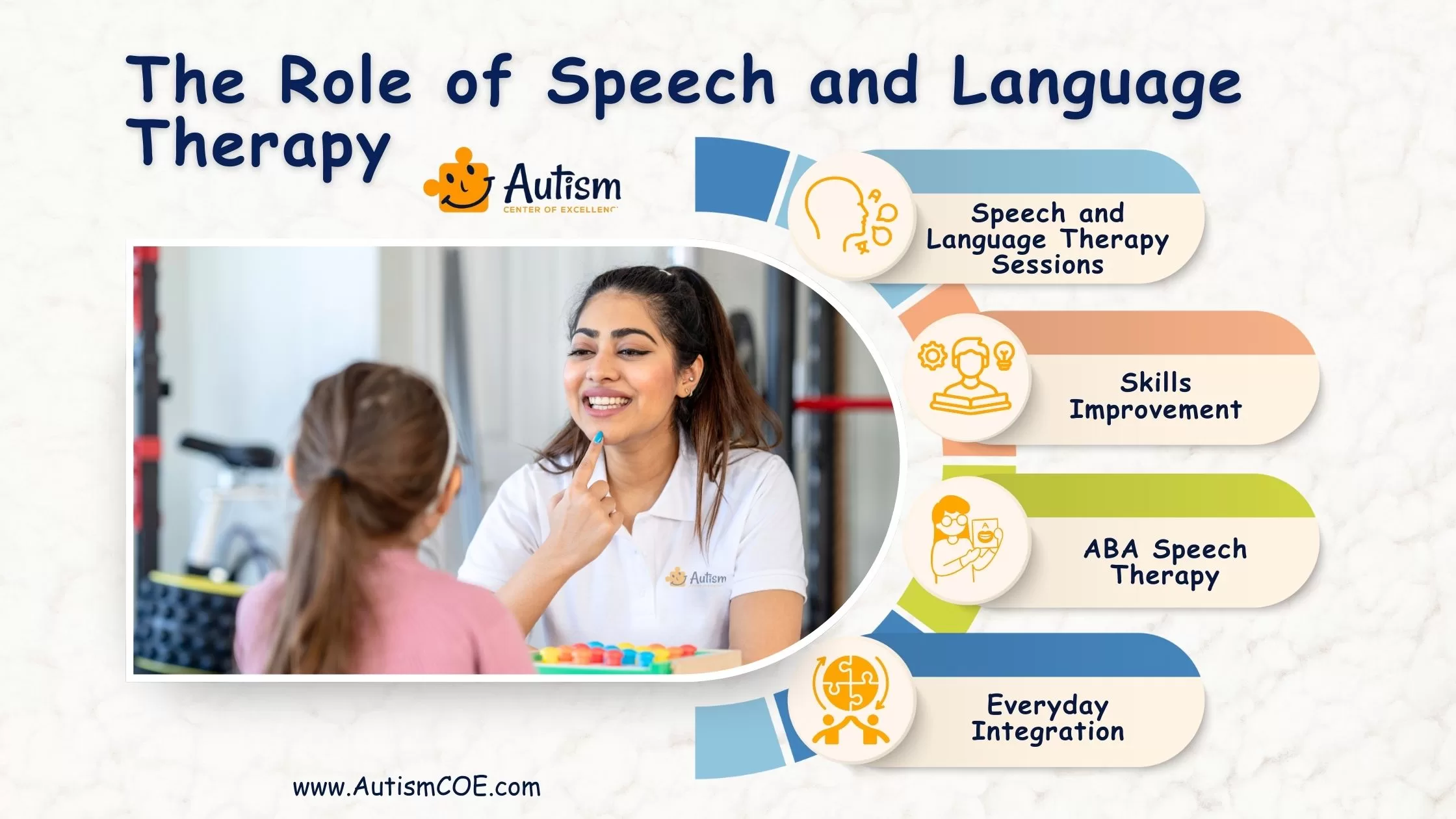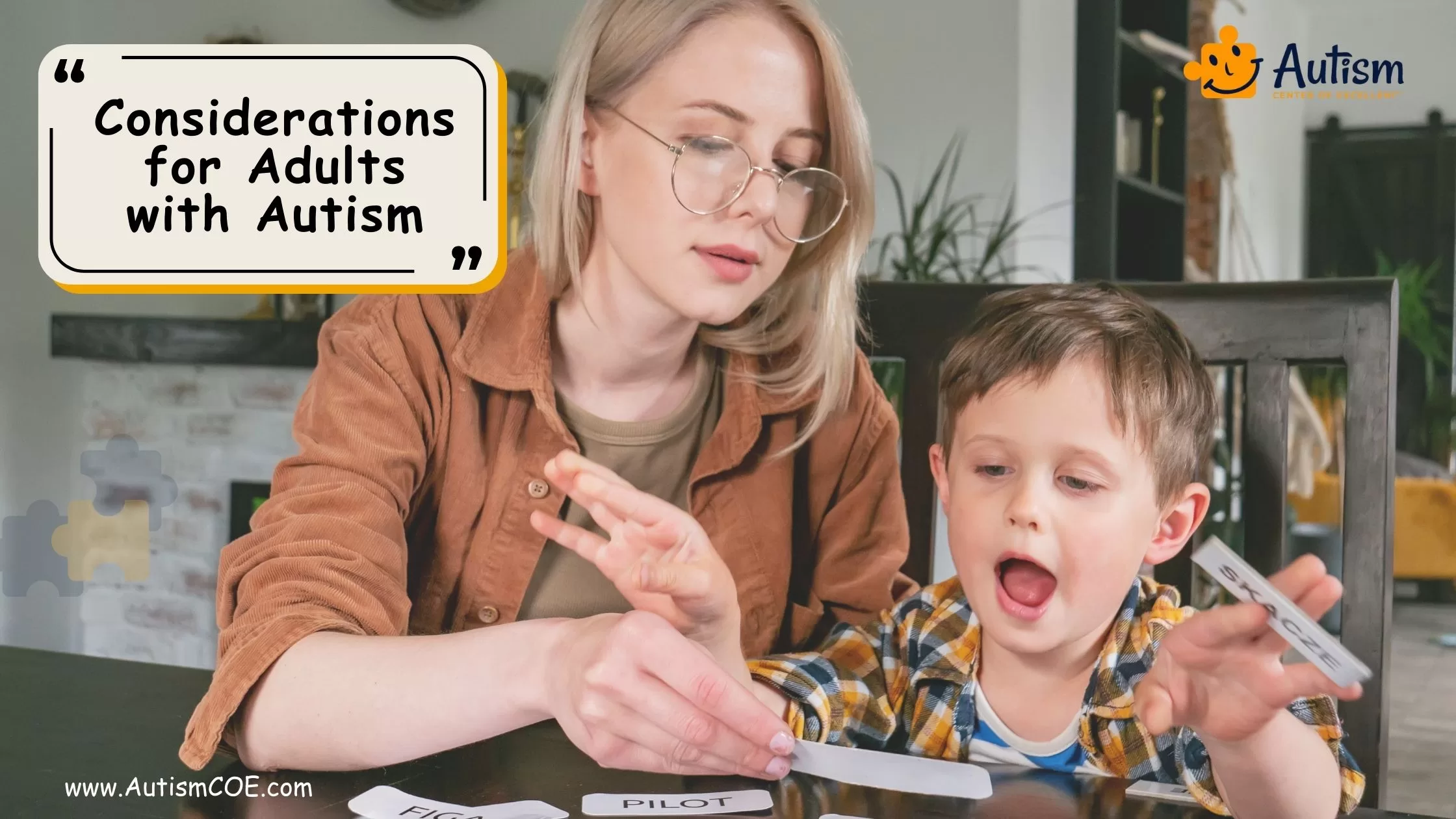Imagine trying to express your thoughts and feelings but not having the right words. This is often how children with autism feel, making communication essential to their growth and development. For parents and caregivers, finding effective communication can transform everyday interactions, making life more enjoyable and less stressful for everyone involved.

Understanding Autism Communication Challenges
It is very important to understand the communication difficulties children face with the characteristics of autism to encourage better interactions. Such children might sometimes fail to understand the word, a gesture, or even what a smile or frown means. Imagine trying to join a game or ask for your favorite snack but having no idea about it that’s exactly how tricky it can be for them.
This is the reason why ordinary activities or playing with their friends become too much to handle at times. Every child has a special way of communicating that is different from other children, meaning what may work on one may not work on another. As long as one understands and adjusts to these special ways of communication, they will have easy habits of expressing themselves more confidently. And of course, keep in mind that with small patience and creativity, we can easily transform this communication process into a game to have fun with, and consequently, into something rewarding.
Simplifying Tasks
Break down everyday activities, like chores or playtime, into smaller, manageable steps to reduce feelings of overwhelm for children with autism.
Unique Communication Styles
Every child is unique in the form of communication, and what will work for one child will not work for another child; so what fits best needs to be found for each child.
Understand and Adapt Them
Accordingly, it can make the children have more comfort and more confidence in speaking if one wishes to take some time and understand and adapt to their unique way of communicating.
Patience and Creativity
Use patience and creativity to make communication engaging and enjoyable. Incorporate games, visuals, or other fun activities to enhance the experience.
Encouraging Expression
We encourage this kind of expression much with children since this boosts their self-esteem and makes communication more enjoyable.
These strategies become stepping stones for your child to explore until he or she finds their own individual voice and says it with confidence.

Practical Communication Strategies for Parents
Visual Aids (Picture Cards)
Use visual schedules for your kids. These can concretize concepts and even emotions your child wants to communicate or convey. These cards make abstract ideas more concrete as well as more accessible through tangible forms, thereby helping your child express what they want to communicate.
Social stories
A short story and description of situations involving social interactions, with possible responses to that situation showing what type of responses is appropriate in a given situation. Social stories have been instrumental in helping children understand that which is expected to be done in a given situation and thus help reduce anxiety and fear connected to social experience.
Communication Apps
List some Communication Apps to Help Your Child with Autism. These may be the best fun ways your child can interact communicate and express themselves and their needs.
Patience and Consistency
Implement these strategies daily. Patience is very important, as new ways of communication will take time, but if consistency is applied, one will see progress gradually.

The Role of Speech and Language Therapy
Speech and Language Therapy Sessions
These sessions help children learn to form words and understand what others are saying. It’s like having a personal trainer for talking and listening skills.
Skills Building
Therapists play games to teach children to express themselves clearly and understand others, making communication more fun and easy.
ABA Speech Therapy
In this approach, the child’s activities will be linked to a goal for the day. Speech Therapy will be driven by the fact that an individual should be able to bring Communication Skills into daily routines. It helps children practice new skills in real life, so learning is more natural.
Daily Integration
By incorporating communication strategies into daily activities, children get to practice and get better, and more confident with others.
These would be more like a toolbox from which children can pick what they need to communicate with confidence.
Enjoying Reading?
Join Our Weekly Newsletters!
Subscribe now to stay updated with our latest email updates.

Considerations for Adults with Autism
Adults are particularly challenged by communication issues that are a bit different from those found in children. Children have difficulties with word formation; adults are less able to interpret some of the subtle social cues-a determination of when to speak or read facial expressions.
Life skills are so important for the simple reason that they make them able to live more independently and securely. Put simply, imagine life skills as tools that make daily interactions and social situations easier to handle. Therapy Therefore Plays a big role in offering support and teaching strategies toward improvement in the skills. It is like having a guide who will make adults become more comfortable in such settings and thus improve their quality of life based on more opportunities.
Frequently Asked Questions & Answer
What Are the Communication Challenges of Children With Autism?
Children who have autism often do not interpret verbal and non-verbal cues, social signals, or clearly express their own needs and feelings.
How Can a Parent Come to Know About the Communicating Style of Their Child?
One must observe the behavior and preference of the child or keep a track record of how the child reacts to specific stimuli and with what methods that always gets acknowledged by them, such as through gestures or visuals, to convey their message.
What is the Role of Speech Therapy in Child Development?
Speech therapy educates children on how to find their way with words, understanding the language and helping them enhance verbal and non-verbal communications.
How Can Apps Aid Children With Autism in Their Communication?
With interactive platforms, communication apps have provided children with ways to convey their thoughts via symbols, pictures, or words. Communication appears to be more interesting and less frustrating for them.
Conclusion
Every child with autism has a unique way of expressing their feelings and thoughts, communicating in a manner that best suits their individual needs. Some children communicate in a language manner, while others may communicate in an image-based fashion or even via technology. This is the importance of personalized strategies that unlock individual methods of each child being able to connect to their world.
Enhancing communication with your child with autism involves collaboration with professionals like speech therapists and special educators, who provide individualized guidance tailored to each child’s needs. Access to therapy centers, such as AutismCOE, can offer vital resources and support to both the child and their family. These centers help families connect with a community of shared experiences, providing comfort and practical advice through support groups.
Please Note: The content of this blog is for informational purposes only and should not be considered a substitute for professional medical advice, diagnosis, or treatment. Consult a qualified healthcare professional for personalized guidance tailored to your specific situation.

Bhavika Bhasin
Bhavika Bhasin is the Research and Marketing officer at AutismCOE. She works with children and adults with ASD. Her clinical research includes evaluating various available autism screening and diagnosis methods and their efficacy. She is currently developing a novel screening exam that is indicated to be more accurate than the existing available exams. She is also writes articles papers for various publications.


